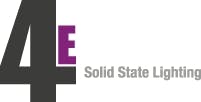The International Energy Agency has published a series of LED-centric reports that report on the impact of LEDs on human health and the environment, and a review of test labs working globally on SSL products.
The International Energy Agency (IEA) Energy Efficiency End-Use Equipment (4E) Annex, formed to assist governments in promoting LED-based lighting as a means to reduce energy consumption, has published a number of new reports. The latest publications report on the impact of solid-state lighting (SSL) on human health while other recent reports include research on environmental impacts and a review of test labs working with LED-based products.
The IEA 4E SSL Annex was formed in 2010 to advise ten member countries — Australia, China, Denmark, France, Japan, the Netherlands, South Korea, Sweden, the UK, and the US — regarding quality assurance programs for LED-based lighting. In one of its first actions in 2011, the Annex created a document that segmented the SSL market and created performance tiers for products. The current focus of the Annex is documenting performance criteria, evaluating the robustness of testing standards, and recommending accreditation frameworks.
Over the course of the last month the Annex has released three reports, the most recent of which is focused on the human health impact of SSL. Specifically, the report focused on the impacts of glare, blue-light hazard, flicker, and non-visual effects on the circadian rhythm.
In the area of glare, the Annex recommends that the maximum luminance of all LED lighting products be specified. Moreover, the report states that designers/specifiers should match the luminance to background ratio based on "visual ergonomics criteria." What is clear, however, is that the industry lacks usable glare metrics.
In the area of blue light, the report implies that photobiological standards to which SSL products are tested are largely sufficient to protect the public. Note we had a series of articles on photobiological issues that exhaustively covers the issues and standards. The Annex also noted that new generations of LEDs are using violet and ultraviolet (UV) emitters and that those products need further scrutiny.
In the area of flicker, the report simply states that it remains a problem for the industry and that no guidelines exist in Europe or the US to limit flicker in LED-based products. The Annex calls the situation unacceptable but makes no definitive recommendation on how to proceed in developing such regulations.
The sections of the report focused on non-visual impact largely cover the same ground on which an interview we published in September was focused. Clearly, there is more physiological research required on the topic but LEDs offer the unique ability to deliver a tuned spectrum. The full report is on the Annex website.
The lifecycle assessment report is based to a large extent on work done by the US Department of Energy. Indeed, we covered the DOE research in a series of articles. The work revealed that the major impact to the environment relative to LED lighting was energy usage and the greenhouse emissions that accompany generation. Those impacts dwarf any environmental hazards attributable to manufacturing SSL products or retiring the spent product. The Annex lifecycle report is available on the website.
The Annex research into test laboratories was exhaustive. The researchers compared the work of 100 laboratories spread around the globe over the course of October 2012 to August 2013. The process involved comparisons of photometric, colorimetric, and electrical parameters associated with a variety of SSL products. More than 50 of the labs were direct and willing participants in the study while others were compared based on existing known test schemes.
"While most of the laboratories were within the expected levels of agreement, a few extreme outliers were observed which must be caused by problems at the participant laboratories in meeting the requirements in the test method," said Yoshi Ohno of the US National Institute of Standards and Technology (NIST), lead author of the report. "Identifying these large deviations by a small group of laboratories demonstrates the importance of proficiency testing, as these laboratories would not have been aware of their problems without participating in IC 2013."
The laboratory evaluations will help the test organizations fine-tune their work, and help lighting companies and specifiers/designers understand the areas where special emphasis is needed in characterizing or evaluating SSL products. The full report is on the Annex website.






